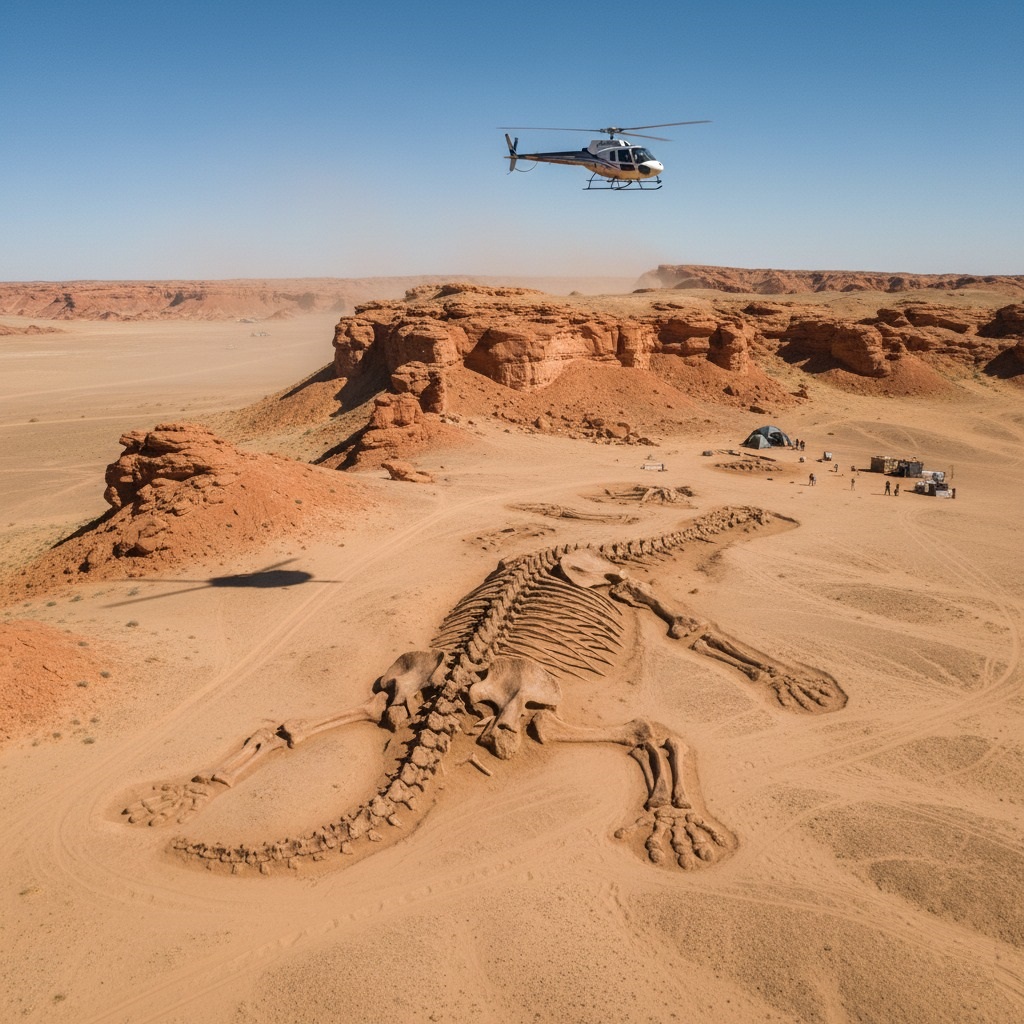Echoes of the Gobi: Unearthing a Titan in the Flaming Cliffs

The wind, a ceaseless sculptor of the Gobi Desert, had for millennia whispered secrets through the sandstone. But for Dr. Aris Thorne, head paleontologist of the International Gobi Expedition, the desert had finally decided to shout. It was a shout echoing from the very bedrock of the Flaming Cliffs – Bayanzag, Mongolia – a place already legendary for its dinosaur eggs and protoceratops.
For weeks, their camp had been a hive of hopeful activity, small figures dwarfed by the towering, rust-red cliffs that seemed to ignite with the morning sun. Then came the tremor. Not an earthquake, but a deeper rumble from beneath the earth, followed by the keen eye of a drone pilot spotting an anomalous pattern in the ancient riverbed strata. Aris felt it in his bones before the first shovel even touched the dust: this was no ordinary find.
As the crew meticulously cleared the overburden, layer by agonizing layer, the sheer scale of the discovery began to emerge. “It’s… gargantuan,” murmured his chief geologist, Lena Petrova, wiping sweat from her brow. “The largest concentration of vertebral bone I’ve ever seen.” They were unearthing what appeared to be an almost complete sauropod skeleton, a titanic creature that once lumbered across this very landscape millions of years ago, when the Gobi was a lush, verdant plain.
The sun beat down relentlessly, raising clouds of fine, ochre dust that painted everyone in the desert’s own palette. A small logistical helicopter, a lifeline to the nearest supply post, made its regular passes overhead, its rotor wash stirring the dust further, a modern sentinel above an ancient leviathan.
Each day brought new revelations: the elegant curve of a colossal rib cage, the astounding length of the tail vertebrae stretching across the excavation grid, and finally, the skull – massive, yet surprisingly delicate, resting in a pocket of hardened sediment. This wasn’t just a dinosaur; it was a record keeper, a fossilized library of Earth’s deep past.
Aris often found himself working late into the twilight hours, the desert sky a breathtaking canvas of purples and fiery oranges. The air would cool, and the Gobi would grow quiet, save for the soft scrape of his brushes and the distant howl of a lone wolf. In those moments, looking at the silent, bone-white grandeur before him, he could almost hear the echoes of the Gobi – the thunderous footfalls of this very titan, the rustle of prehistoric flora, the ancient breath of a world long gone.
The discovery at the Flaming Cliffs wouldn’t just rewrite textbooks; it would ignite imaginations for generations to come. It was a testament to the enduring power of nature, the relentless march of time, and humanity’s unyielding quest to understand the incredible story of our planet. And in the heart of the Gobi, under the watchful gaze of the Flaming Cliffs, the titan had finally awoken.
